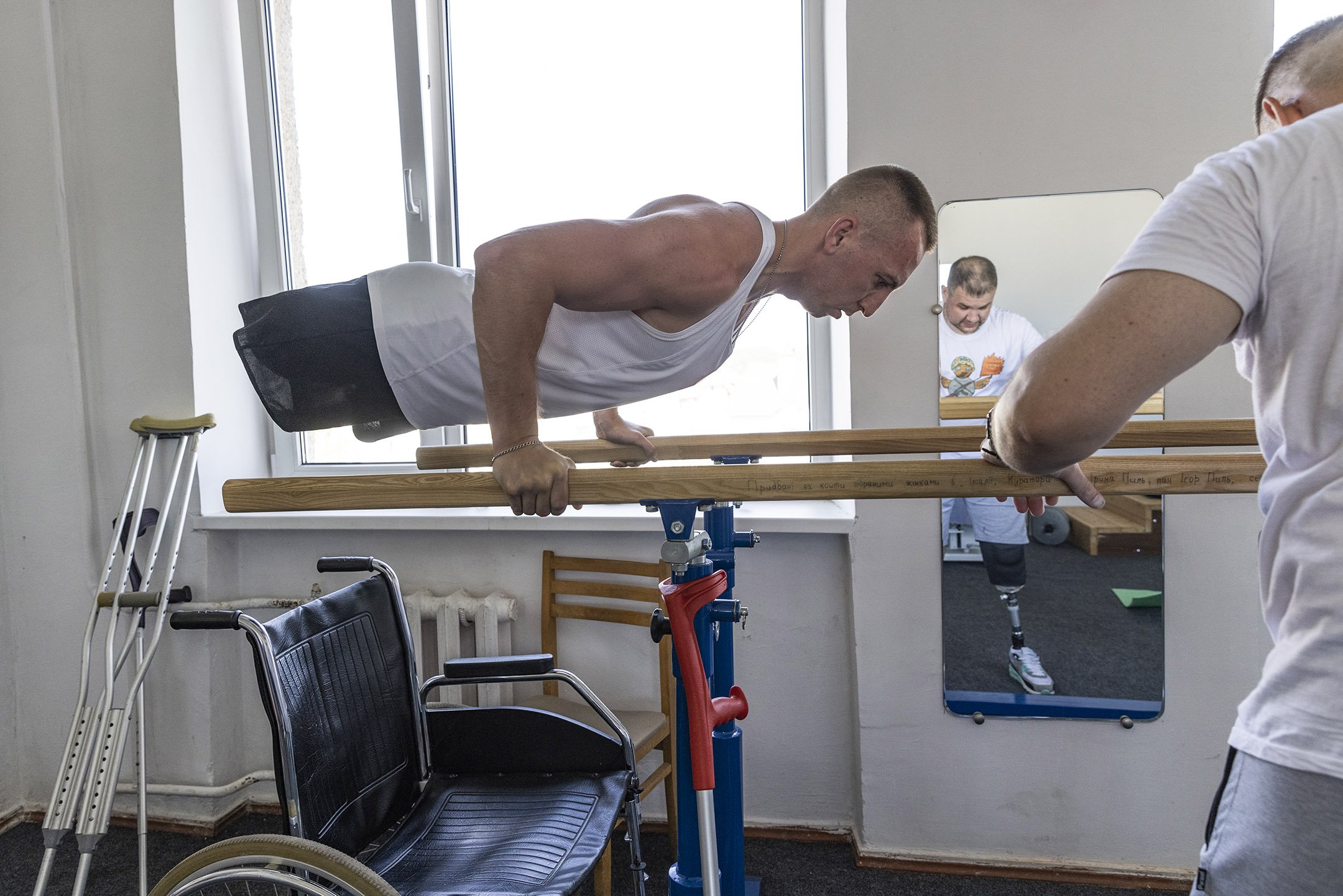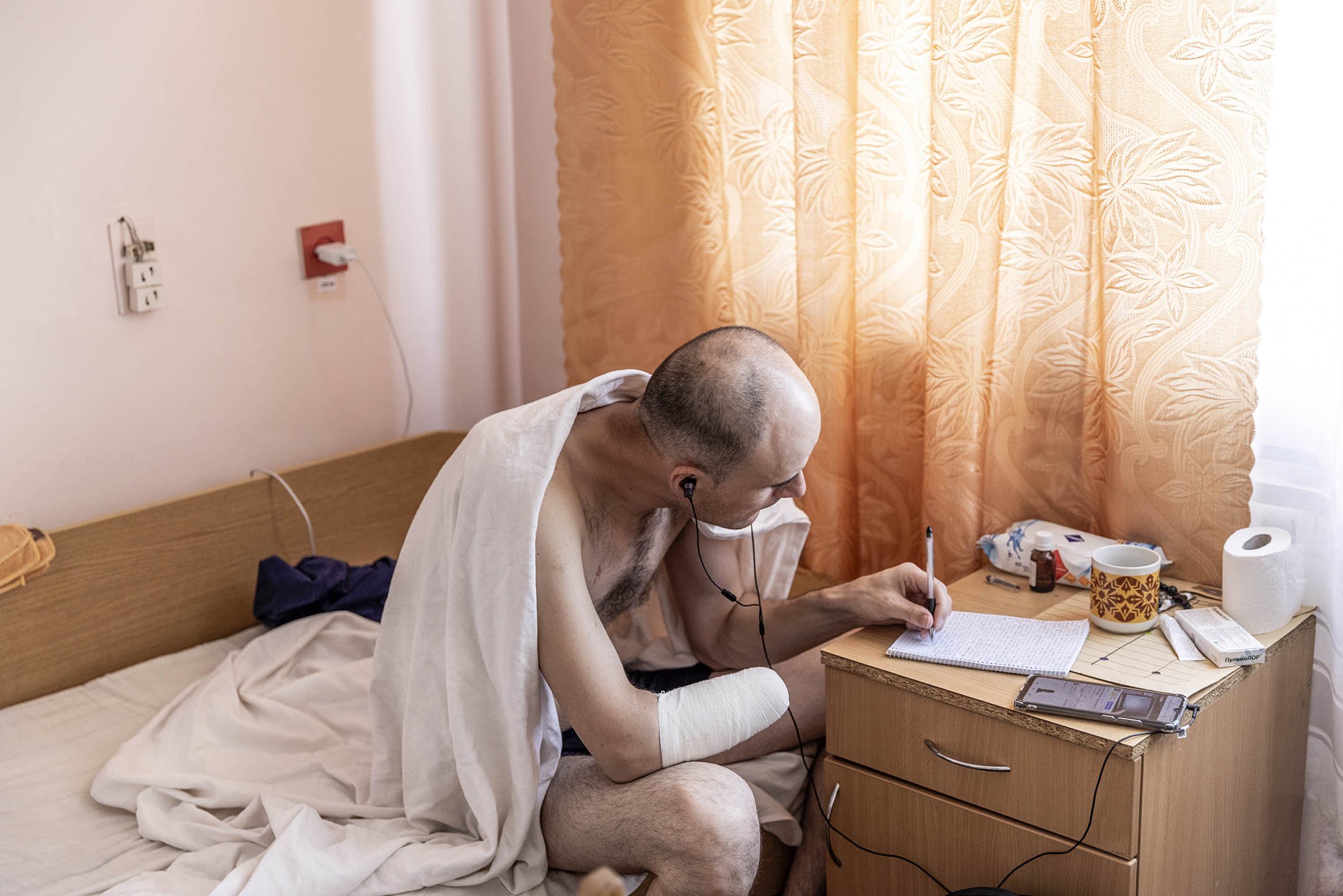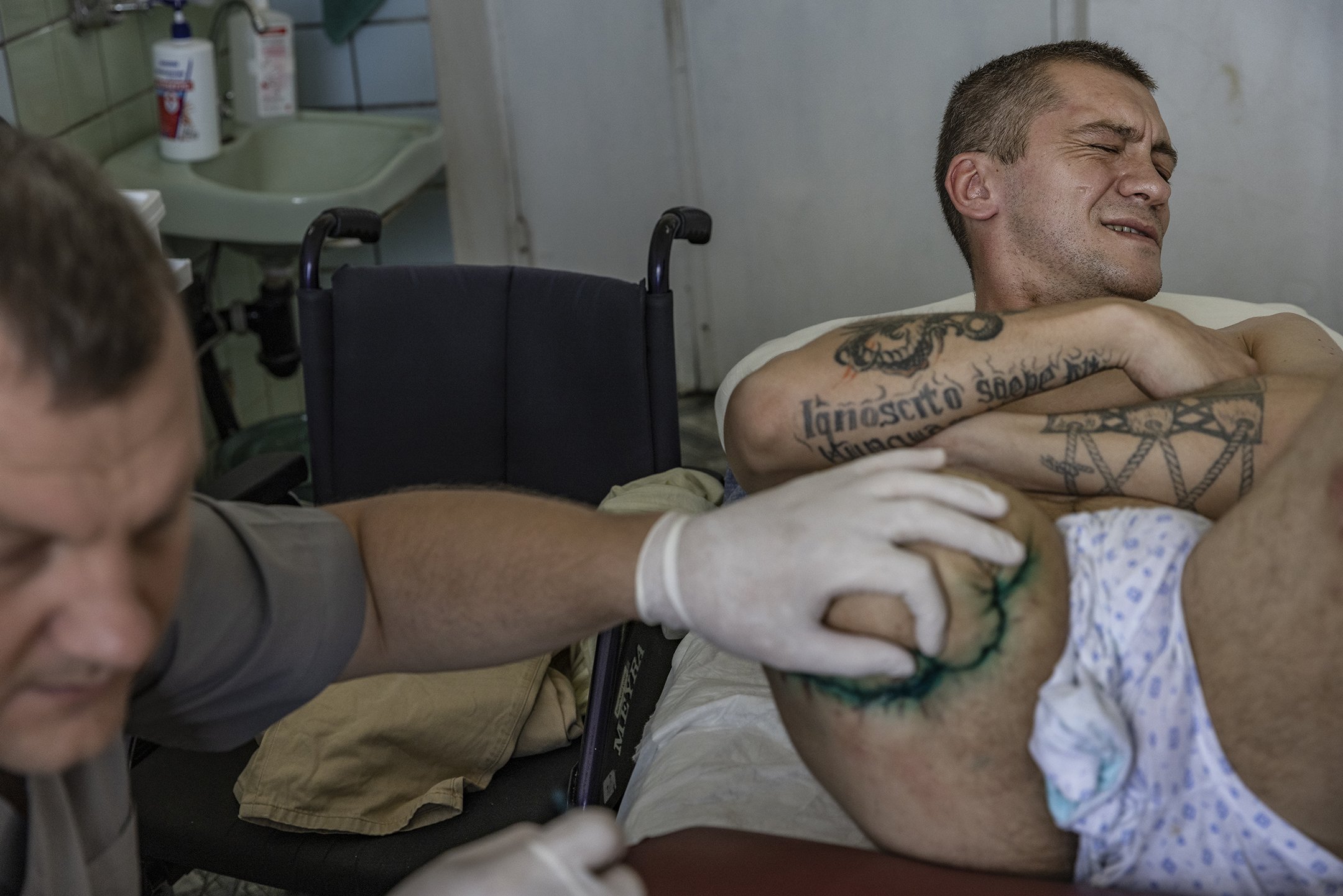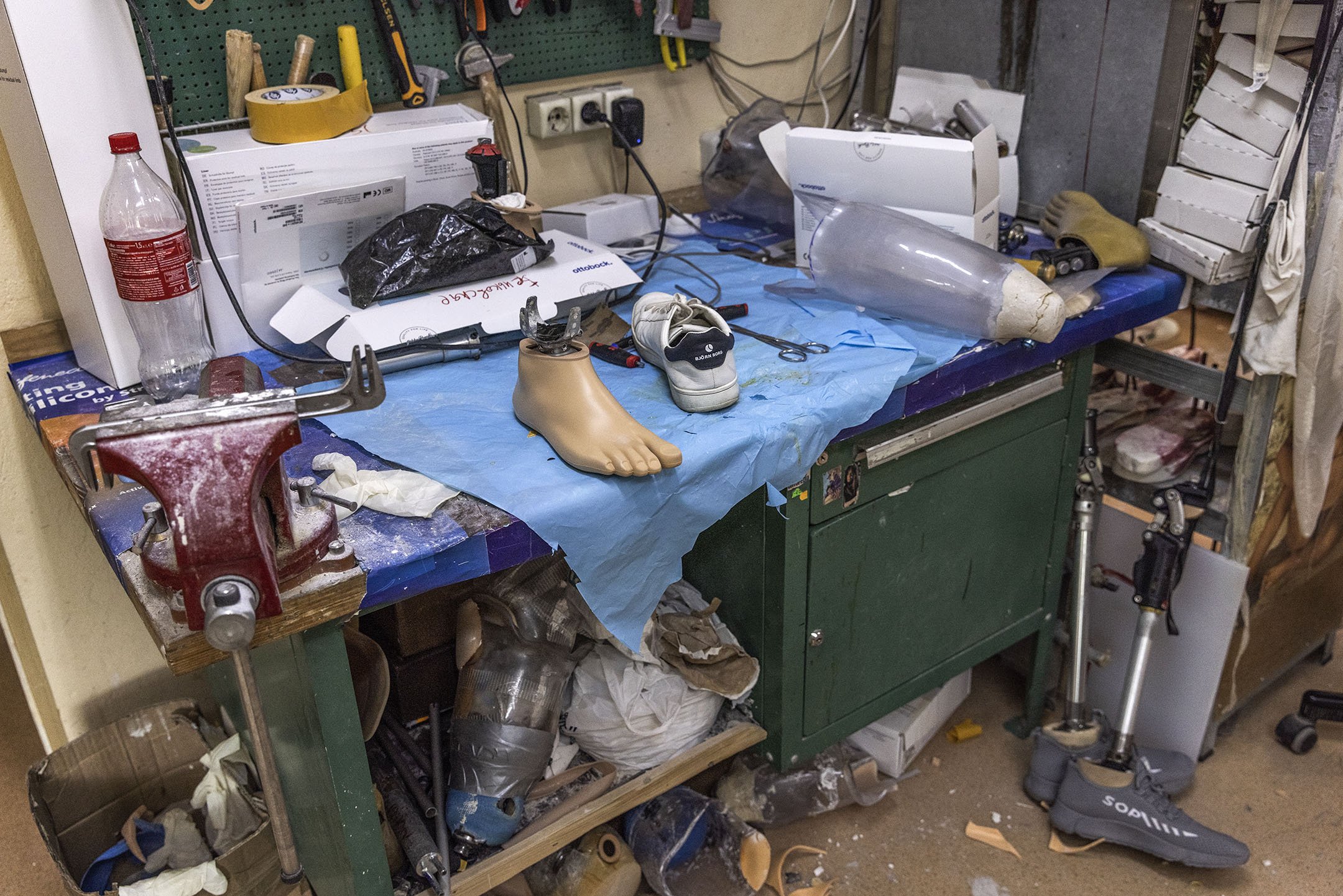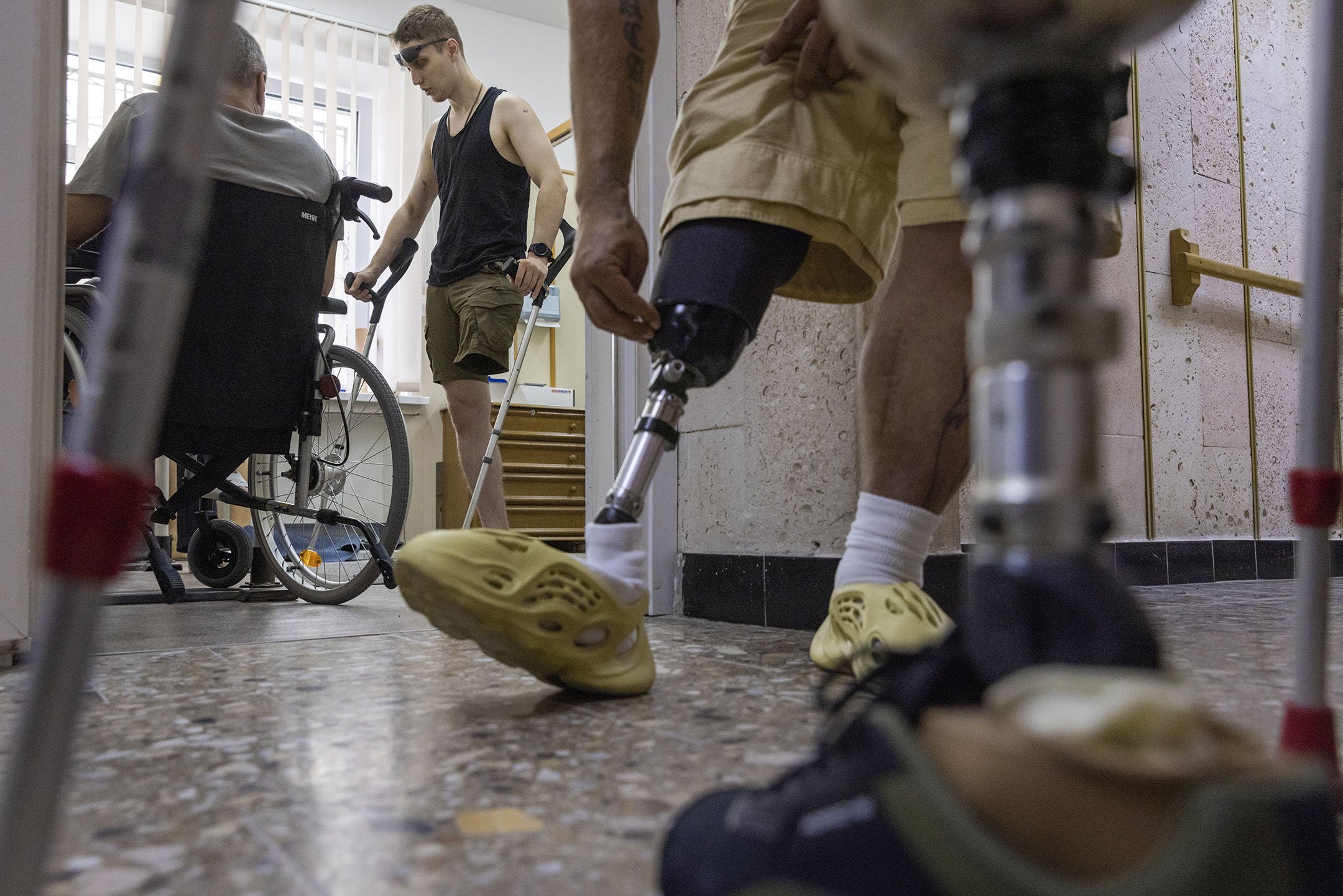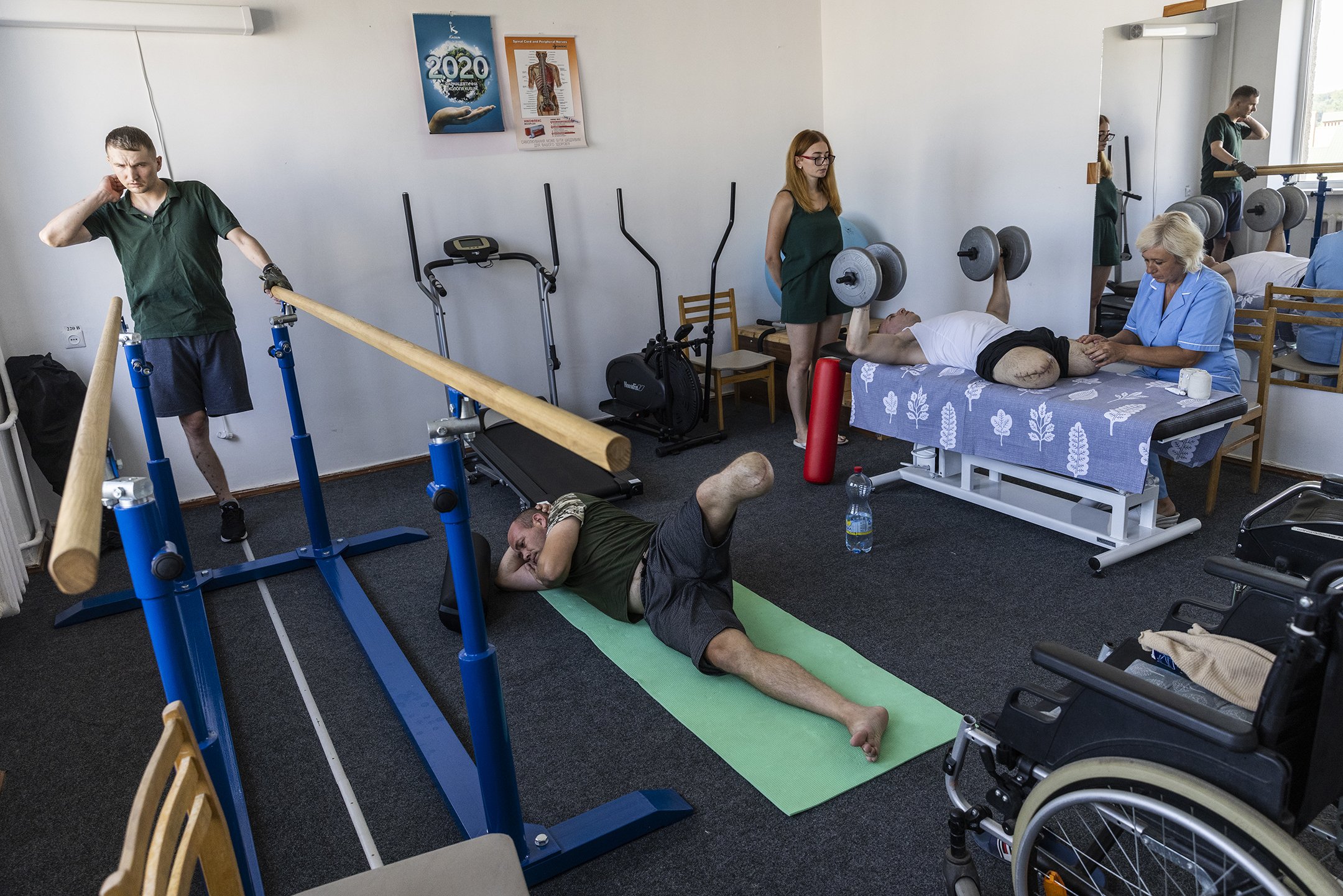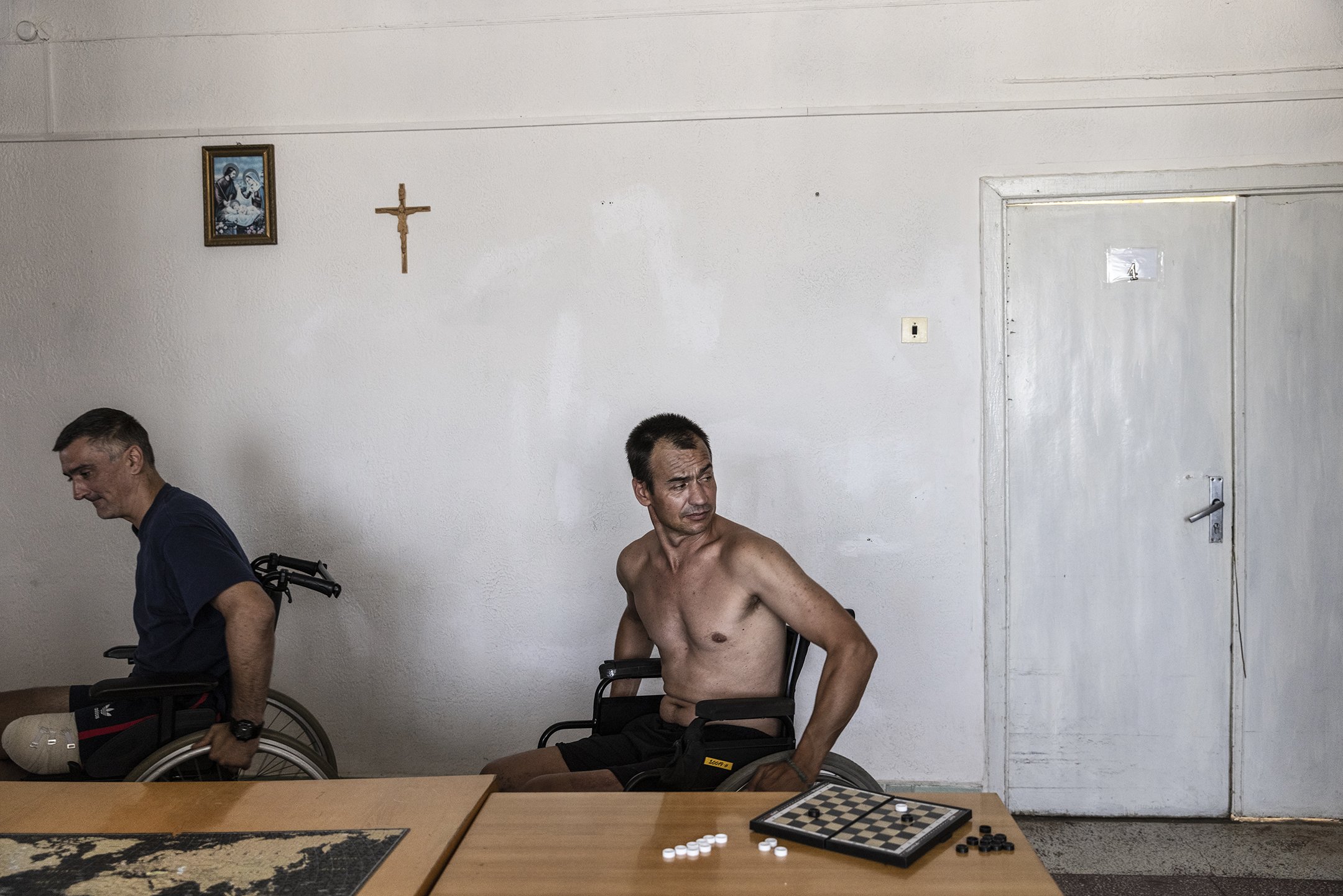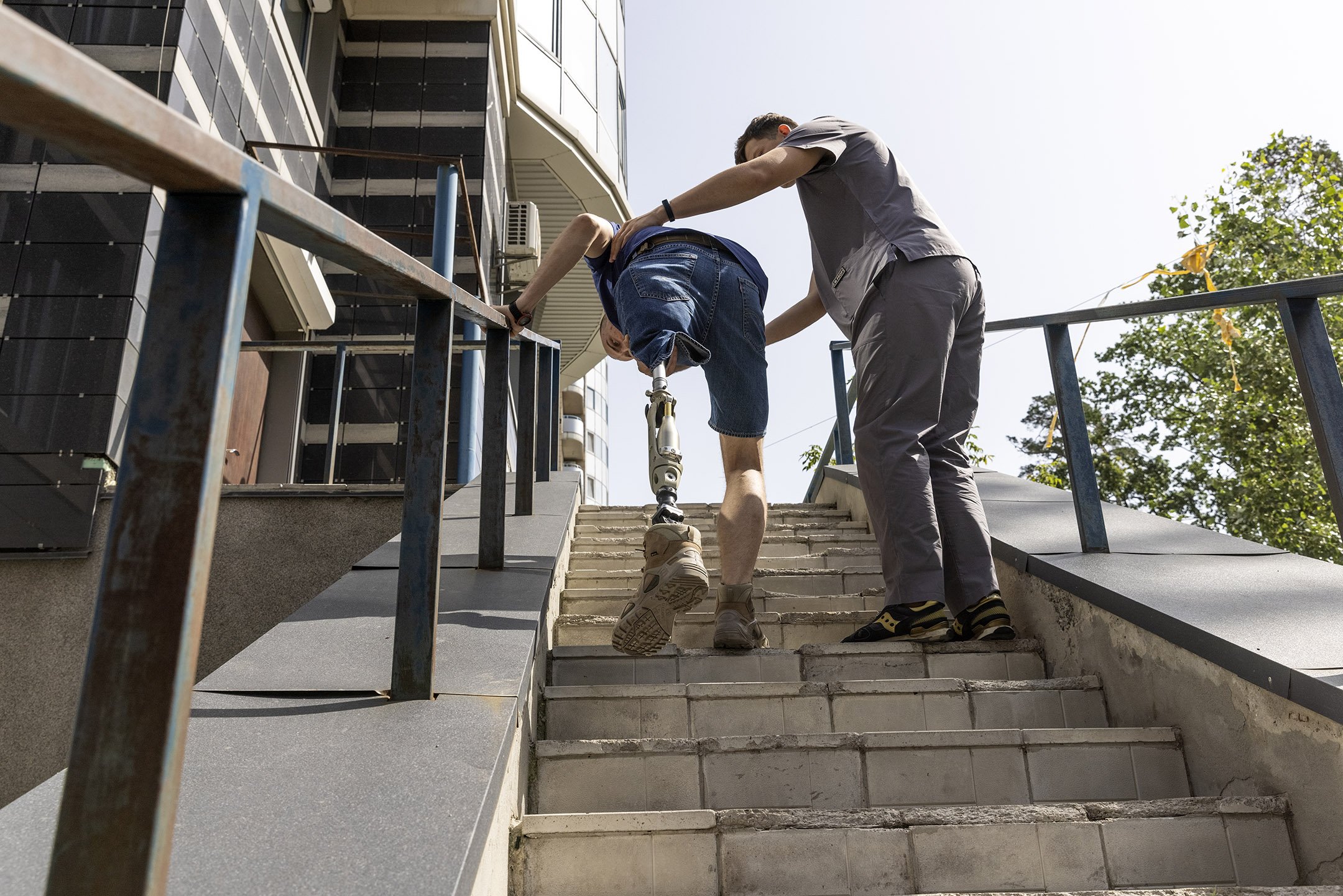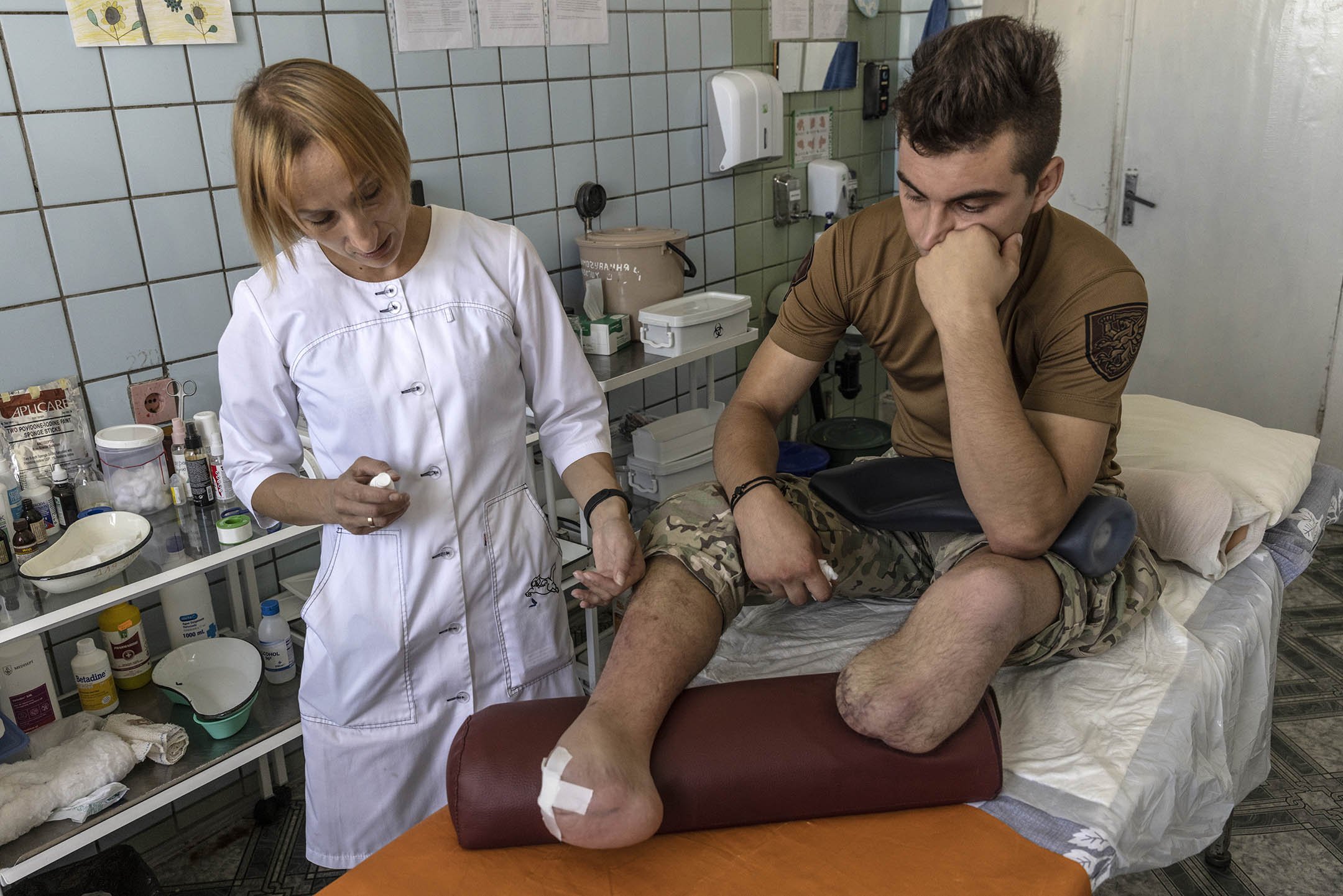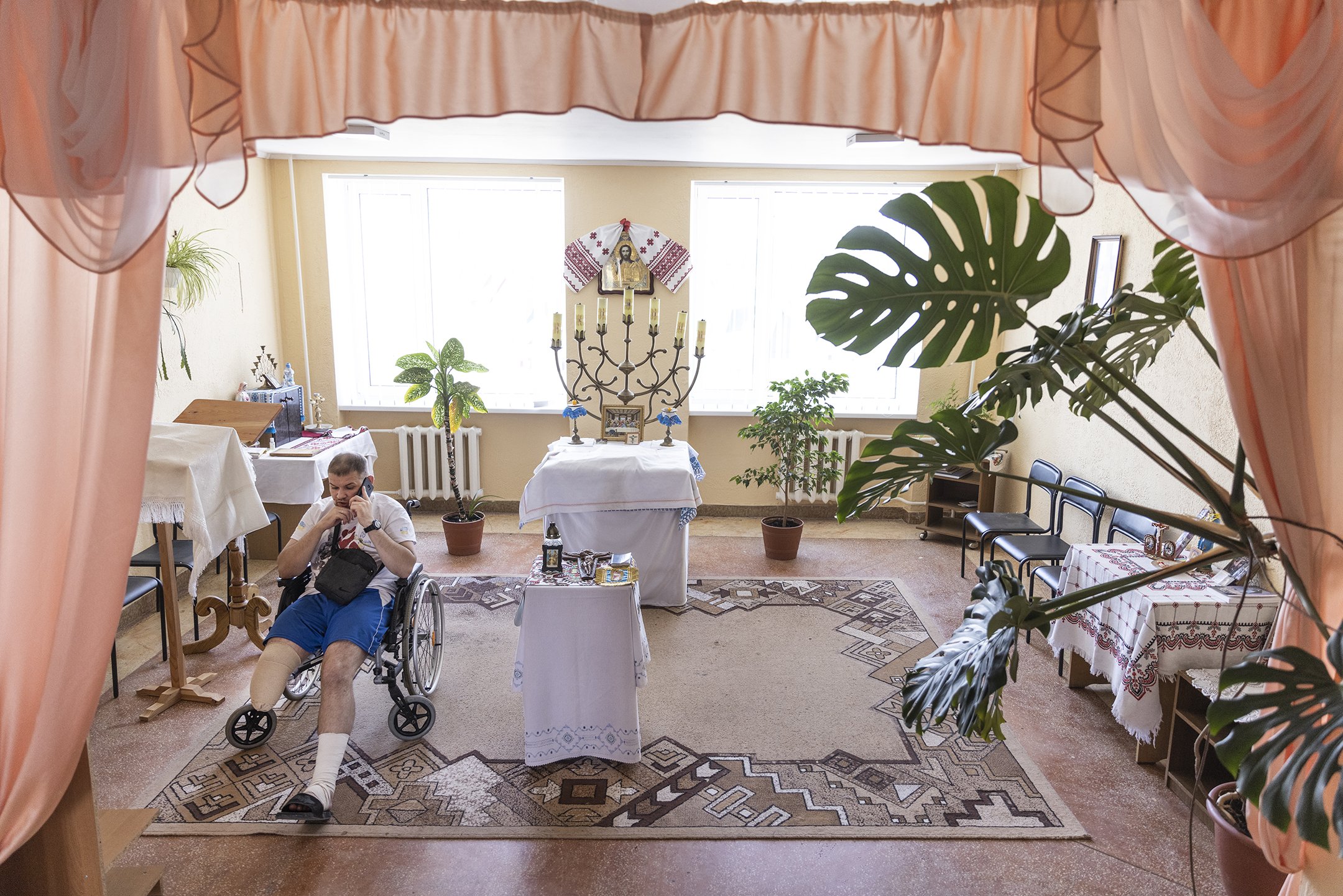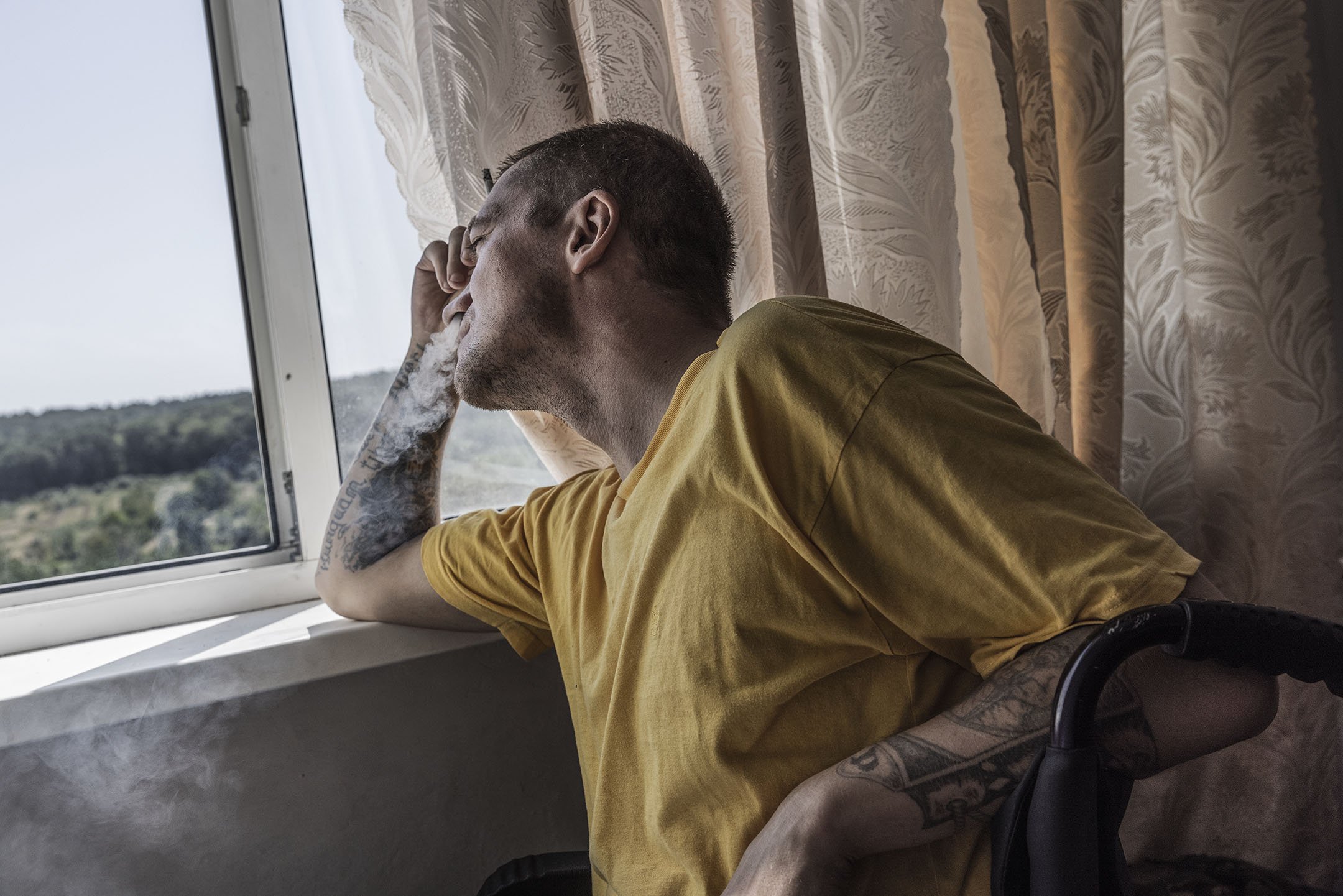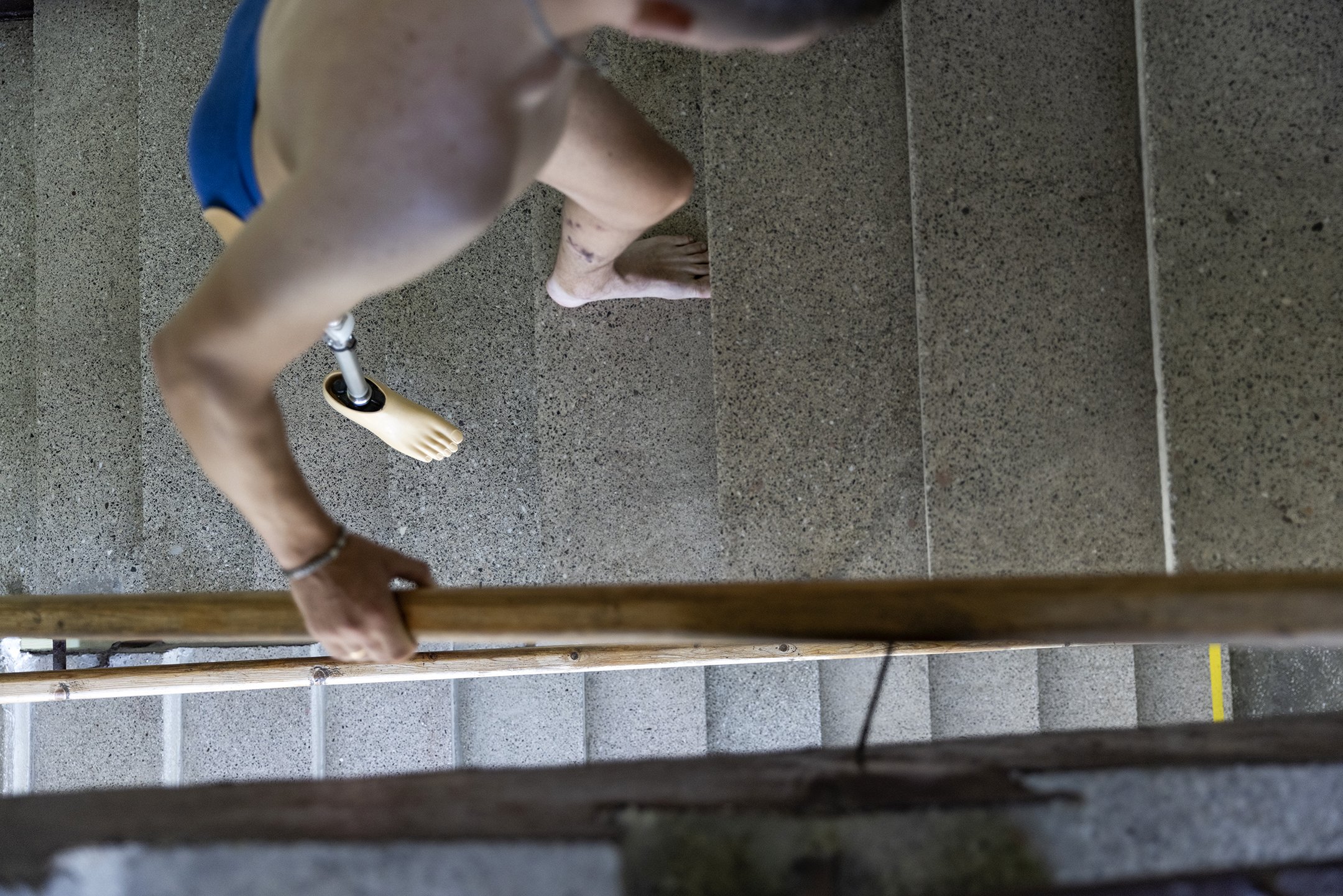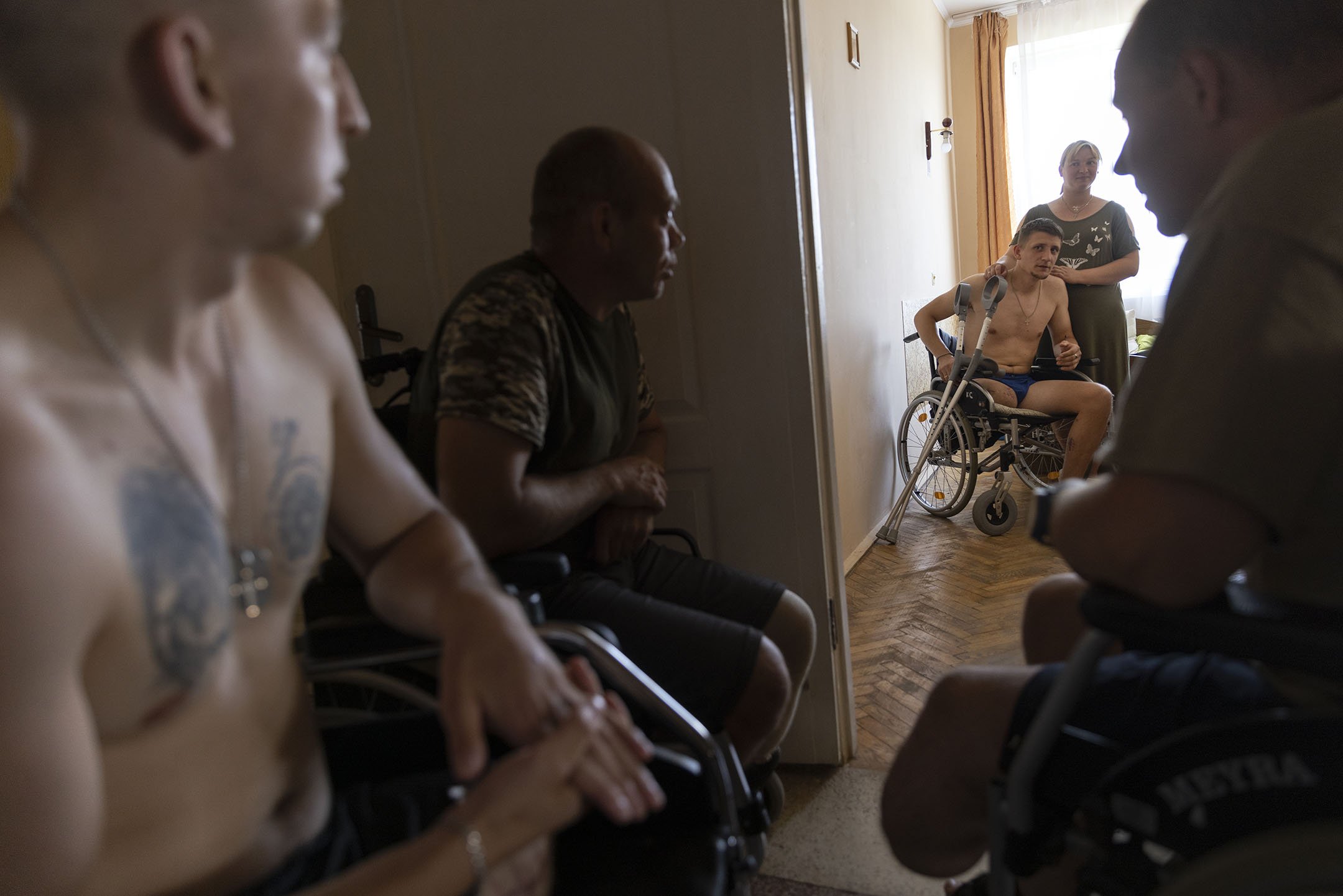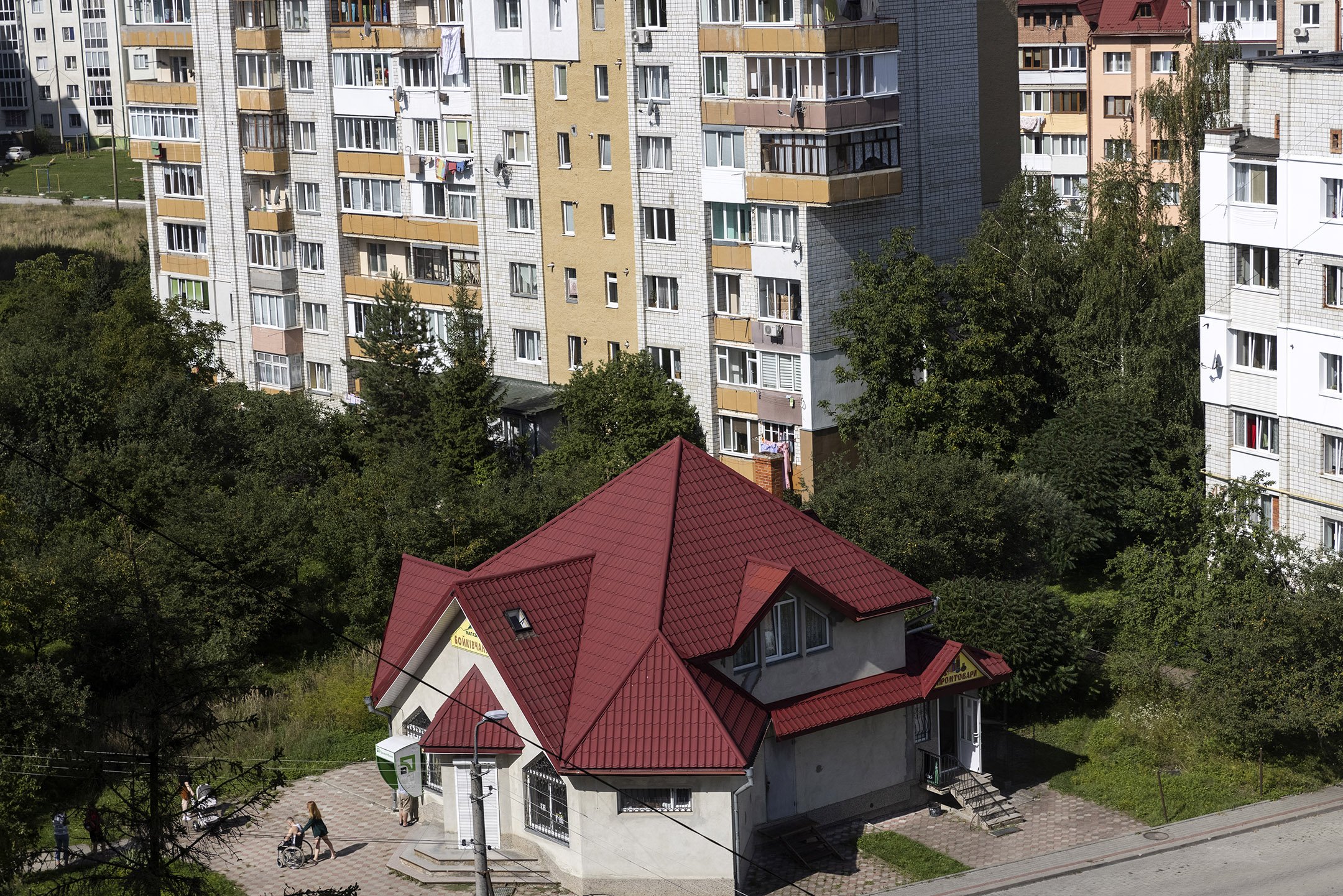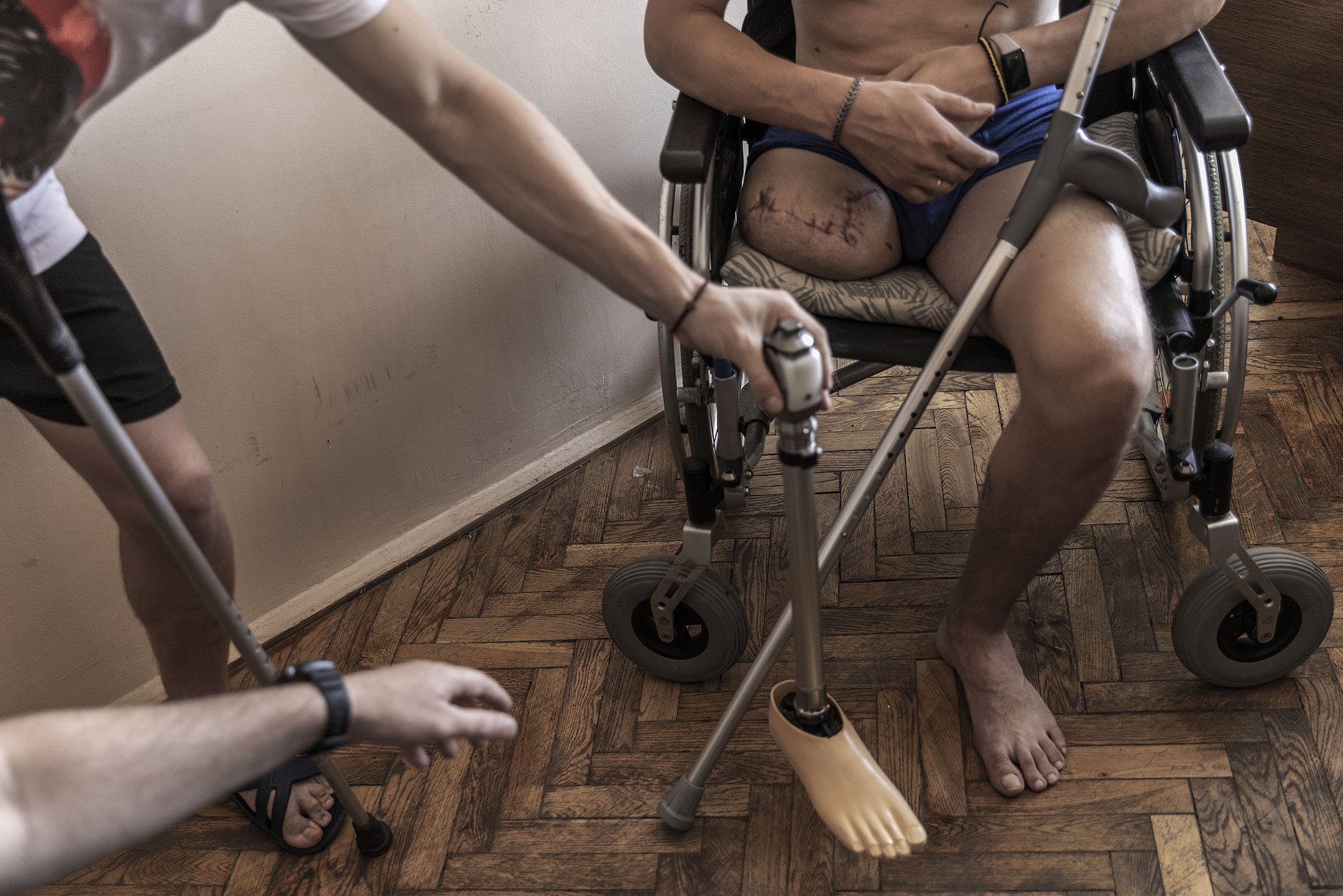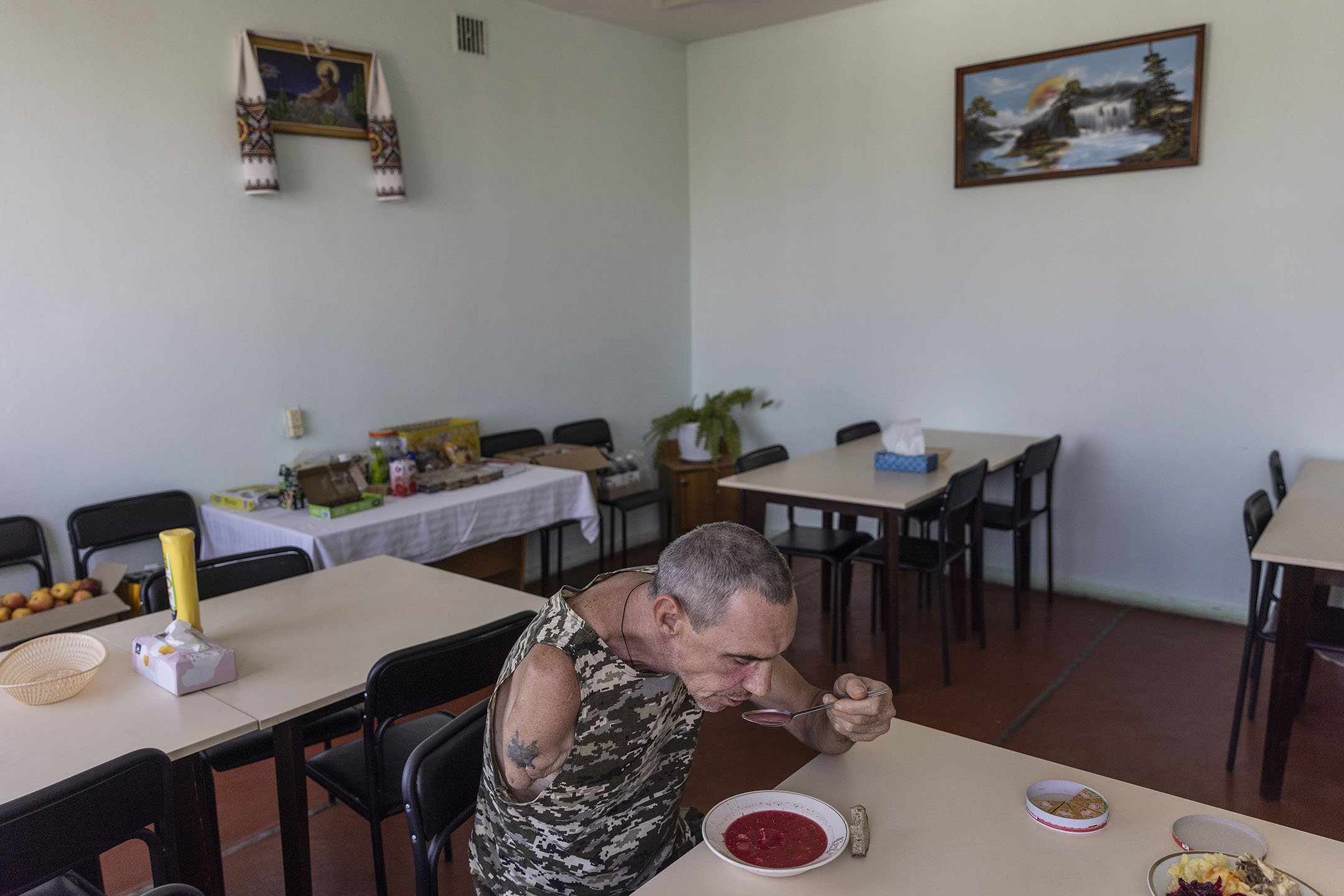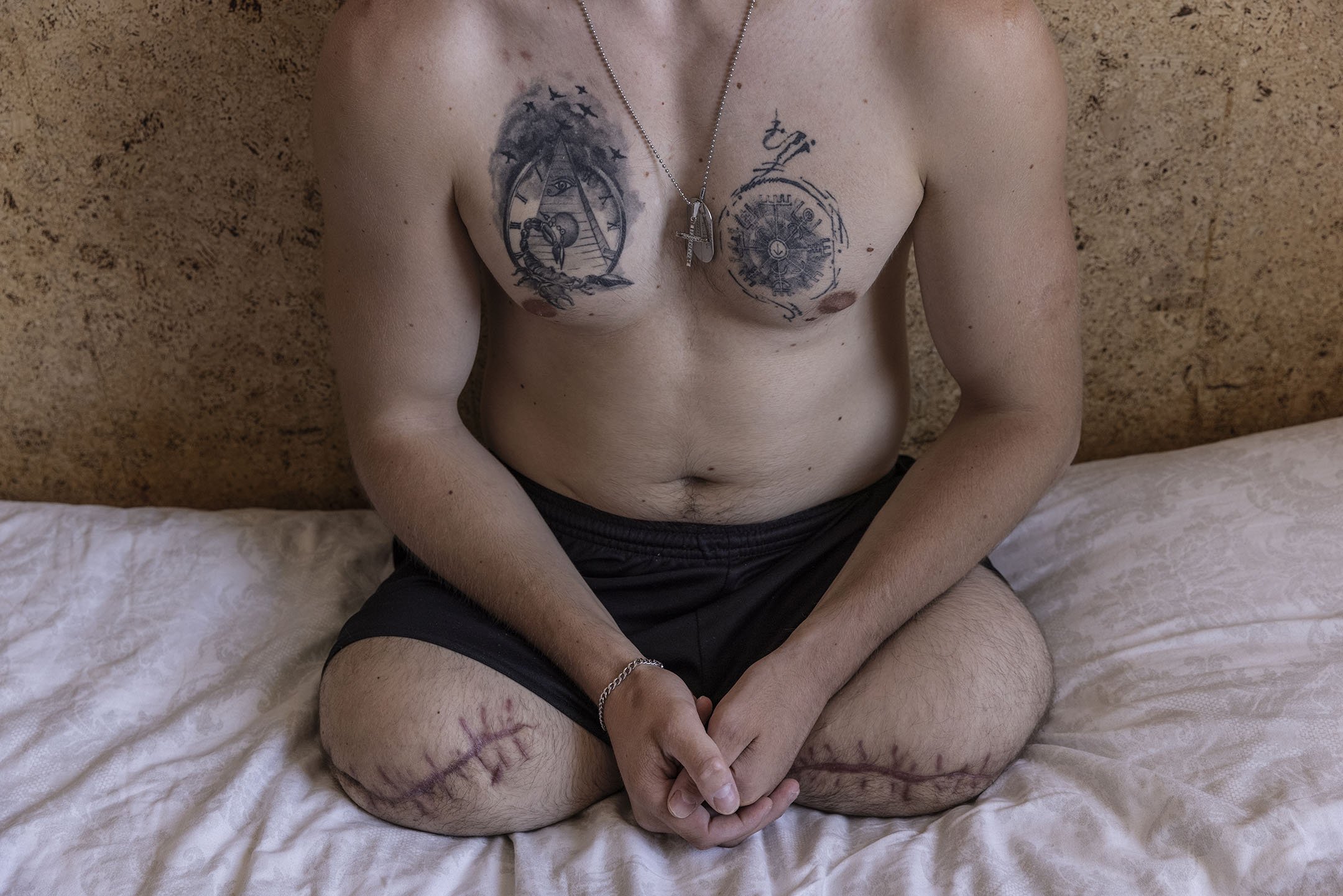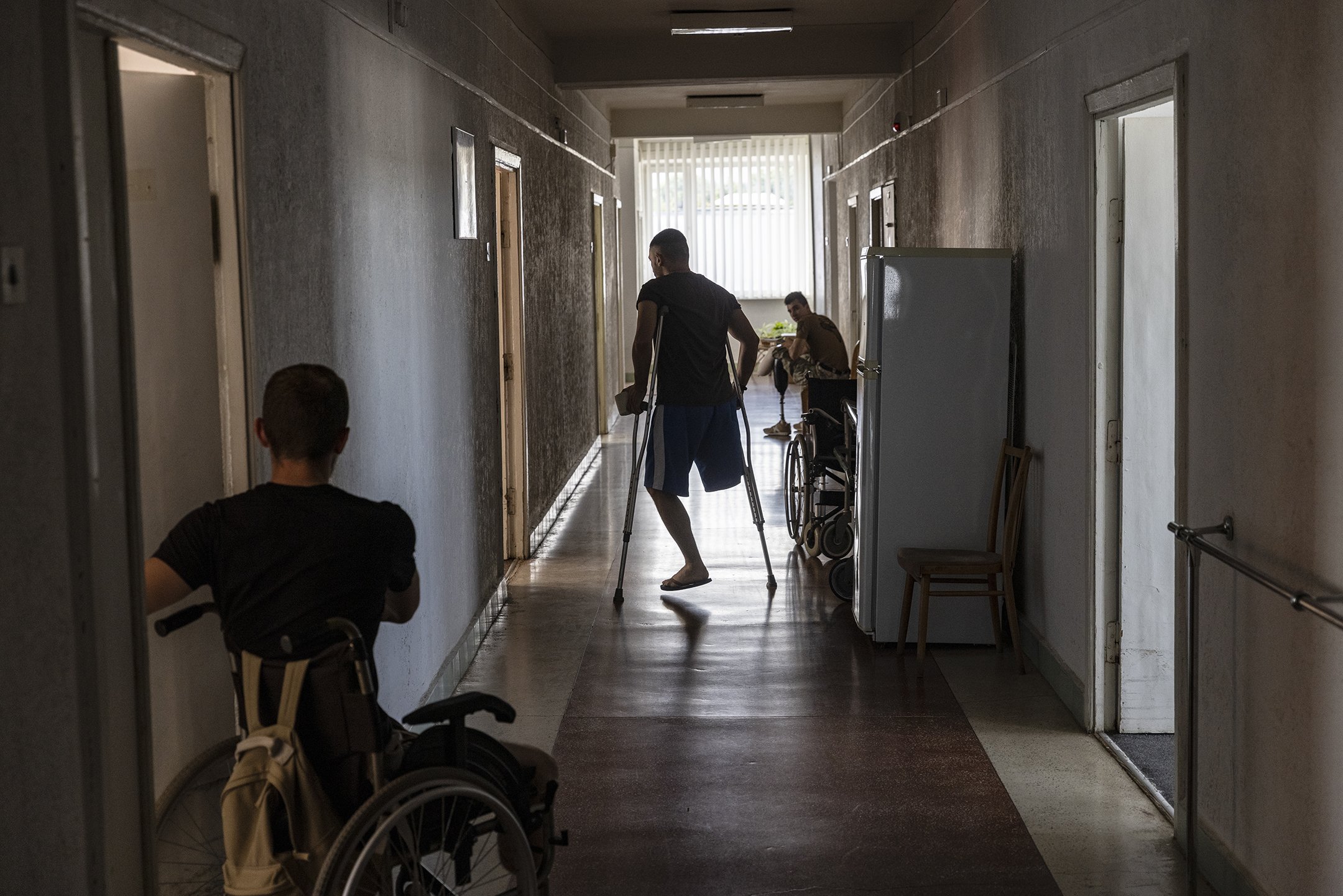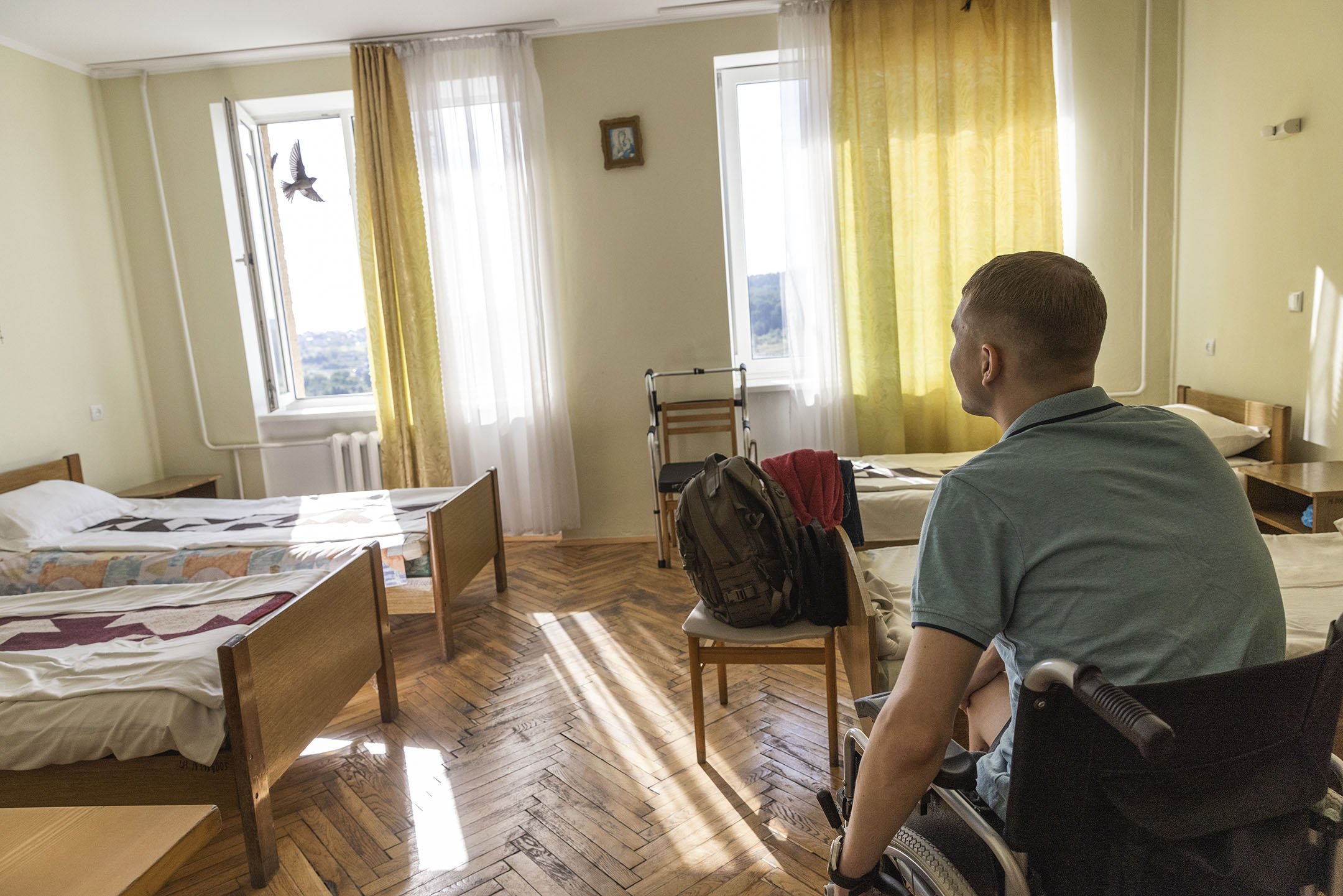In all of its decades of service, Truskavets City Hospital, an old medical center serving a city in western Ukraine, never had to specialize in treating amputees. But things change — sometimes in seconds, and with the roar of an incoming rocket.
Now, Truskavets is part of Ukraine’s growing limb-replacement effort, with two of its floors filled to near overflow with soldiers.
Semyon, 27, found his way there by way of Kharkiv, a battleground in the war that began after Russia invaded Ukraine on Feb. 24. Early one morning, he was serving as a radio operator and signalman for an antiaircraft battery when it came under mortar fire. By Semyon’s count, his unit was hit 43 times in only 20 minutes.
He lost his right leg.
“When I was first fitted with the prosthetic leg,” Semyon said, “it was perplexing to understand that this leg is not mine.” But the staff at Truskavets kept working with him. “Now all is good,” he said.
Misha, 27, lost not one leg but two, and gained a new nickname. His comrades in a Ukrainian assault brigade had called him “Savage,” but his fellow patients at Truskavets now call him “Acrobat.”
He fought in Kherson, Luhansk and Donetsk, and lost his legs when he was hit by shrapnel during a battle over a river crossing near Bilohorivka, in the Luhansk region. Now, awaiting his prosthetics, he spends his hours in the hospital’s small gym.
“Before, I weighed 82,” he said, using kilograms; in pounds, about 180. “Now, I weigh 10 kilos less.”
Ihor Zobkiv, 22, lost his lower left leg and part of his right foot when his armored personnel carrier hit an antitank barrier in northern Mykolaiv, in the country’s south.
He has been in Truskavets for months, and he has not been idle. Over the summer, he met a young woman while having lunch in a local cafe, and now they plan to marry. Ihor has other ambitions, too.
“I plan to continue to serve in the army,” he said.
Even when the war was still young, some in Ukraine already were expecting a surge in the need for prosthetics as amputees began returning from the battlefield.
In the spring, the owner of a Ukrainian prosthetics factory said he planned to expand production at his factory in Kyiv, moving to double and triple shifts, because the numbers of amputees were already so high.
Serhii Zvyagin, 34, who was wounded in a shelling attack that killed two of his fellow soldiers, is still waiting for his prosthetic to arrive.
The artificial limbs are made and fitted by outside specialists, and as the number of war wounded climbs, delays are not uncommon for that reason too.
Hospitals like the one in Truskavets not only provide the prosthetics; they also work intensively with wounded soldiers to teach them how to use them.
Vanya, 34, a national park employee who lost his right hand serving in an infantry assault group in Luhansk, is spending part of his time learning to write with his left one.
“I’m waiting for a prosthesis,” he said. “They offered me a hook, but I’m not ready for that. I hope I will someday get a more modern prosthetic.”
The soldiers who arrive at Truskavets, still traumatized from battle, need more than just medical attention.
When outfitting two floors to handle the orthopedic patients, the hospital also fashioned part of a hallway into a church.
In the months since Truskavets began taking in amputees in March, a small community has formed in its corridors. On any given day, they bustle with not just patients and the medical staff, but also family members and soldiers who once served with them.
“Some patients have become friends, and some are like family,” said one of the doctors, Pavlo Kozak. “We want to create conditions for psychological and physical rehabilitation.”
When a new prosthesis is delivered to the hospital, it can be a big event. Patients crowd around, eager for a look, and sometimes they even pass the artificial limb around for closer inspection — and a glimpse, perhaps, of their own future.
It is not just curiosity. The soldiers were comrades on the field, and they are comrades in the hospital. And so when Semyon was being fitted with a leg in his hospital room for the first time, his wife by his side, his fellow soldiers peered in from the hallway.
They cheered him on as they he took his first steps.
Truskavets is not the only hospital working with Ukraine’s war wounded. One rehabilitation center in Kyiv has been treating soldiers from the defense of Mariupol, one of the best-known battles in the conflict.
Russia laid siege to the southern port city early in the war, trapping residents for weeks without electricity or water. Members of the Azov Battalion gained celebrity-like status in Ukraine after holing up in a steel plant and rebuffing a Russian assault for 80 days.
One patient, Vladyslav Tkachenko, was wounded as he was fighting with the Azov Battalion and Russian aircraft bombed his position.
“The last thing I remember is the explosion,” he said.
Even before Moscow launched its full-scale invasion, Russia’s seizure of the Crimean Peninsula in 2014 had forced Ukrainians to gain expertise in prosthetics. Vladyslav Korenok, 32, lost a leg in that fighting, and on a visit to the Kyiv rehabilitation center in August, he showed his prosthesis to the more recently wounded.
In many ways, it was a fluke of architecture that led the Truskavets hospital to be chosen as a treatment center for war amputees. As a carry-over from the Soviet era of design, what it lacks in grace it makes up for with wide corridors, doorways and bathrooms that make it easier for a wheelchair to navigate.
The building may not have needed a wholesale makeover, but some of its medical workers had much to learn about their new patient population.
“Before the war, I was providing procedures and rehabilitation for patients who’d suffered trauma and strokes,” Dr. Kozak said. “I had no experience dealing with amputees.”
That is no longer true. To date, about 150 patients have made their way to the hospital’s orthopedic unit. There, they await new limbs — and new lives.

